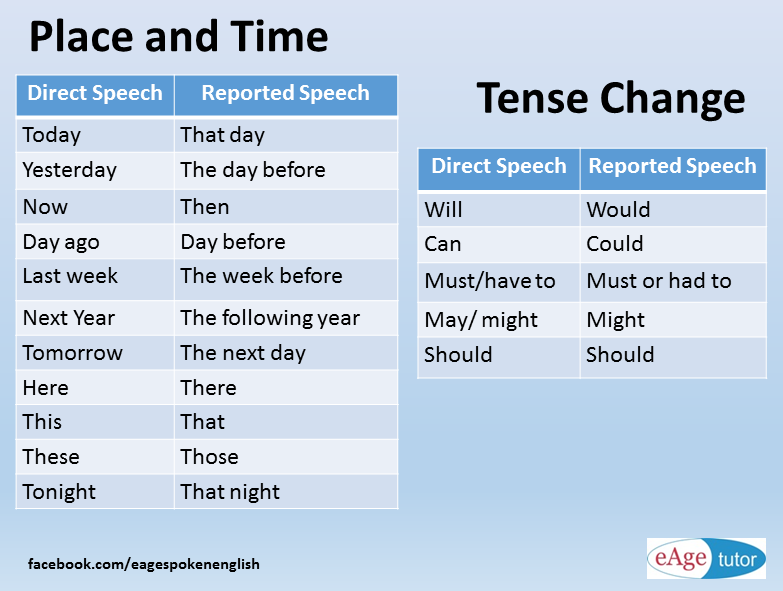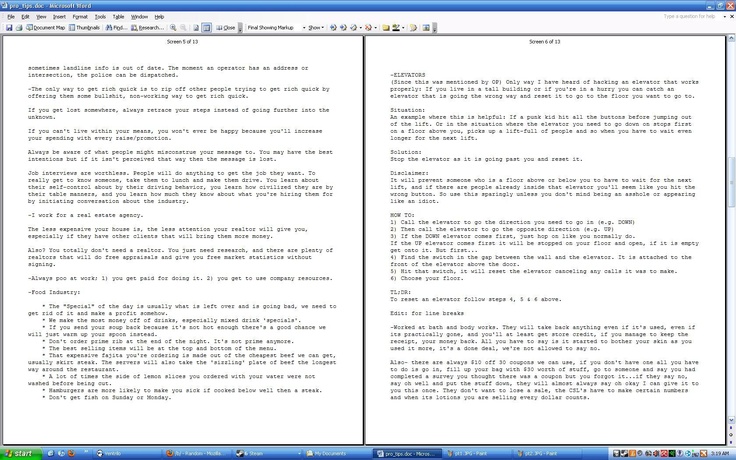Car tires are the only part of a car that touches the ground and if anything were to happen to it, the car will most likely become immobile. A lot of things can happen to a tire to render it useless and possibly cause loss of air pressure.
One cause of loss of air pressure in a tire is when a screw or nail is lodged inside. A screw can get inside a tire when it is being driven or someone deliberately put it inside. So, the question is, how to tell if someone put a screw in your tire?
You can tell there is a screw/nail in your tire if the nail is visible for you to easily see, if the tire is deflated, during tire inspection, or if you caught someone putting the nail/screw in your tire.
Table of Contents
There are a number of ways to tell if someone put a screw in your tire, they are:
If a screw or nail is in your tire, you will most likely see it if the person didn’t remove it afterward, this is possible provided the nail isn’t small-sized.
It will be very easy to detect a nail or screw in the tire if it is sizeable and also if you are someone that checks all parts of the car regularly before driving.
Another way to tell if there is a screw or nail in the tire is if the tire is deflated. Nails in a tire will create a passage for air to get out and with the escape of air, the tire deflates. You are likely to notice this when it feels like the car is weighing on one side than the other.
If you are someone that regularly checks the car tires before going out you will be sure to notice the nail or screw in the tire. This is an advantage of constantly checking a car before driving out, it saves you lots of stress when on the road.
You will also be able to tell if someone put a screw in your tire if you caught them in the act. Catching them in the act makes it impossible for them to deny doing it.
Here are the reasons why someone will put a screw in your tire:
 A person may decide to put a screw or nail in your tire just because they can and it is something they usually do.
A person may decide to put a screw or nail in your tire just because they can and it is something they usually do.It is not ok to drive with a screw in the tire except when need be.
Most people do not intentionally put their car on the road with a screw lodged in its tire, it is usually due to unawareness.
Whether it is ok to drive with a screw in the tire or not, it is not safe to do so because of the possible dangers it posses. You need to learn how to protect your tires from nails and screws to be on the safer side.
You need to learn how to protect your tires from nails and screws to be on the safer side.
You should be able to drive a distance between 10 – 15 miles with a screw in your tire. However, it is important to know that the distance you will be able to cover depends on the size of the screw/nail and how deep it has gone into the tire.
The distance may be longer if the screw is a small one and it’s not letting air out of the tire plus if it is not deeply lodged in the tire.
Immediately you realize there is a screw or nail in your tire, you should find a way to get it out. It is not advisable that you remove it yourself as you may be unable to determine the extent of the damage, therefore you should take the car to an auto shop and have them remove it.
At the auto shop, the mechanic will be able to determine the extent of the damage done and will most likely suggest a repair or replacement if necessary. But, if you can do it yourself (DIY), you can go ahead.
But, if you can do it yourself (DIY), you can go ahead.
You can watch the video below made by lanceoa on his YouTube channel where he explained how you can successfully fix a tire that has a screw/nail on it.
If you leave a screw in your tire whether intentionally or unintentionally it may lead to serious problems such as;
The cost of fixing a tire with a screw in it largely depends on the garage you went to and if you will require other services like a wheel alignment.
Irrespective of the garage, you should be able to fix the tire for between $10 to $20 on average and all things being equal.
A determining factor in whether you will need a new tire if you have a screw in your tire is how deep the screw is in it.
If the screw didn’t go in too deep and just affected the treads you can simply repair it by patching the area up but if the screw is deeply lodged in the tire you will need a replacement.
Also, if you didn’t notice the screw in time which invariably means it has been in the tire for a long time you will most definitely need to change to a new one. And ensure to reset your TPMS after installing a new tire.
If you do not have the know-how and a repair kit do not try to remove a screw or nail from a tire as you may end up causing more damage.
| Tire Forge
So, your tire is punctured, and you notice a shiny, or perhaps, a rusty nail stuck in it!
Was it just an accident, or did someone try to sabotage your day? How to tell if someone put a nail in your tire?
Honestly, it is difficult to say. In this article will discuss some reasons this pesky nail found its way into your tire and how you can prevent this.
In this article will discuss some reasons this pesky nail found its way into your tire and how you can prevent this.
Page Contents
Accept reality! There are literally ‘thousands of things’ laying on the road, just waiting patiently for you to drive your vehicle over them. You may have picked it up somewhere on the road.
If your car’s front tires kick up a nail, the back tires may catch it.
Similarly, a car in front of you may kick up a nail, which may be caught by the tires of your car. These are just unfortunate events, and they do happen!
There is no big mystery here. It is a nail, and it could have come from anywhere. Perhaps the nail fell off a construction truck that had been in that area.
If the nail is stuck on the sidewall of your tire, there is a possibility that someone did that on purpose.
But again, that will require someone to drive the nail through the tire using a hammer or a large stone. It is not easy!
A person trying to put a nail in your tire must deliver a hard blow to overcome the bounce of the rubber.
It would be very unlikely for someone to put a nail in a tire with their bare hands.
Trying to hammer in a nail will be time-consuming, and the possibility of the perpetrator getting caught increases.
Another possibility of a deliberate attempt to sabotage your car’s tires is that someone places a nail upside-down right next to the tires and waits for you to drive over it.
The weight of the car will do the job. This eliminates the need to hammer a nail into the tire.
Check the tire pressure. If the pressure is low, it is possible that you punctured a tire with a nail.
If the pressure is low, it is possible that you punctured a tire with a nail.
However, if the nail has embedded deep into the tire, it may be plugging the hole it created, thereby preventing air leakage right away.
If you suspect that a nail has caused a puncture, jack up the car and inspect the tires. A nail or a screw will be easily visible.
There are many ways in which a nail can get into your tire. Some of them are:

There is no definitive answer to this question.
A slow puncture means that there will be a slow and gradual loss of pressure. You may be able to drive for many miles before you notice the problem.
It is not easy to spot a slow puncture, but it is not impossible either. You need to stay alert to spot the subtle signs of a slow puncture.
Here are some telltale signs:
 This, too, can indicate a slow puncture.
This, too, can indicate a slow puncture.It is unfortunate if your car tire picks up a nail somewhere on the road.
However, there are a few things you can do to prevent deliberate sabotage by someone who just hates you for some reason (perhaps you didn’t invite the person to your weekend barbecue party).
Here is what you can do:
#1. Check:Inspect the sides of your four tires. Make sure that you check both sides of each tire. If you notice a nail, remove it before moving your car.
It takes a few seconds, but it is totally worth the effort.
If your car is parked on asphalt, it will be easy to check. However, if it is parked on gravel, make sure that you sweep around 3-4 inches on both sides of each tire and look for nails.
Try to park your car in a place where there are enough people around.
The possibility of someone spotting a deliberate sabotage attempt remains high, thereby deterring the perpetrator from committing this serious crime (if you call it so).
#3. Install a Car Camera:If, for some reason, you are convinced that someone has deliberately put a nail in your tire, consider installing a car camera that can snap photographs whenever it detects physical presence around your car.
The VAVA Dual Dash Camera is a great option because it comes with an additional camera that you can mount in your car’s cabin or on the rear window.
It also comes with night vision, 360-degree swivel, and 24-hour operation, even when the engine of your car is turned off!
Yes, it is possible!
You can hammer a nail into someone’s tire, but you will need a significant hammering force to counter the bounce caused by the rubber.
Alternatively, placing a nail upside-down next to the tire is an easy way to do that.
The weight of the car will cause the nail to penetrate the tire as the car starts moving.
You can start with a simple visual inspection.
If you notice one of your tires slightly deflated compared to the other tires, you can be sure that there is a hole in it.
However, there are other ways to tell if there’s a hole in your tire. They are:

Thanks for reading our article! We've written this article with a lot of thought and care. If you're interested in seeing more of our content, please check out our Tires section and find an answer to your questions!
The self-tapping screw is one of the most widespread fasteners all over the world. These simple but very effective hardware is used to connect parts made of wood, polymeric materials, steel, non-ferrous metals and their alloys. In addition, self-tapping screws help to ensure a reliable and at the same time collapsible connection of completely different materials, such as plastic and wood, drywall and steel. Despite the fact that everyone knows how to use self-tapping screws, there are some subtleties that are not familiar to most home craftsmen. We have prepared some interesting tips that will help make working with these hardware easier, more efficient and safer.
Despite the fact that everyone knows how to use self-tapping screws, there are some subtleties that are not familiar to most home craftsmen. We have prepared some interesting tips that will help make working with these hardware easier, more efficient and safer.
At first glance, it may seem that screwing in self-tapping screws is not fraught with any troubles, and the only thing to be wary of is licked slots. You will be surprised to know that every year tens of thousands of people around the world are seriously injured while working with these hardware. Problems associated with safety violations, malfunctioning tools or simple inattention can range from abrasions and cuts to penetrating wounds of the limbs and damage to the eyes.
To avoid trouble when working with screws of this type, you must follow a few simple rules:
 A self-tapping screw, screwed in with effort, can fly off in any direction in an emergency;
A self-tapping screw, screwed in with effort, can fly off in any direction in an emergency; The safety measures listed above are quite enough to protect yourself during work.
Everyone can screw in a self-tapping screw, but there are several nuances that will allow you to apply a minimum of effort and perform the operation with the highest quality:
 This will allow you to quickly and accurately screw the screw into the material and prevent cracks;
This will allow you to quickly and accurately screw the screw into the material and prevent cracks;  The best solution would be to use another screw, since a hardware that has lost its shape most often creates problems at the end of the installation and can damage the material around it;
The best solution would be to use another screw, since a hardware that has lost its shape most often creates problems at the end of the installation and can damage the material around it;  A molten drop of material that has come to the surface will not allow the screw head to be pressed tightly against the surface of the material. If you cannot do without heating, then you need to start screwing in the fasteners, then, without finishing the work, remove it and sand the installation site. After that, you can screw the screw into the design position;
A molten drop of material that has come to the surface will not allow the screw head to be pressed tightly against the surface of the material. If you cannot do without heating, then you need to start screwing in the fasteners, then, without finishing the work, remove it and sand the installation site. After that, you can screw the screw into the design position; 
Self-tapping screws with a countersunk head provide an aesthetic appearance of the assembly, which allows them to be used both in construction and installation, finishing and furniture work. But the maximum effect can be achieved using additional methods of masking the head of the fastener, which allow you to make the junction completely invisible.
To be able to hide the flat head of the hardware in the tree, you need to drown the self-tapping screw into the material by about 1-1.5 mm. Having some skills in working with a screwdriver, it is not difficult to "get your hand" in such an installation and perform twisting with high speed and quality. It is even easier to control the position of the fastener when working with a screwdriver, conventional or electrically driven.
We offer 4 ways to mask the countersunk screw:
Wood putty. This method is relevant on wooden surfaces. Putty can be both oil-based and based on modern polymers, such as acrylic. It is very simple to use - it fills the free space above the installed product, flush with the surface of the wood. This work is best done with a small rubber spatula, which will allow you to quickly deal with a large number of fasteners. After application, the putty must dry, after which the surface is sanded with sandpaper to create a perfect surface. In order for the color of the material to match the shade of wood as much as possible, sawdust is often added to the putty. Also, often the place of hidden fastening is tinted with special furniture crayons designed to mask damage.
Putty can be both oil-based and based on modern polymers, such as acrylic. It is very simple to use - it fills the free space above the installed product, flush with the surface of the wood. This work is best done with a small rubber spatula, which will allow you to quickly deal with a large number of fasteners. After application, the putty must dry, after which the surface is sanded with sandpaper to create a perfect surface. In order for the color of the material to match the shade of wood as much as possible, sawdust is often added to the putty. Also, often the place of hidden fastening is tinted with special furniture crayons designed to mask damage.
Decorative caps. On sale you can find both products in a standard, neutral color, and products imitating any kind of wood. The principle of operation of such a plug is very simple - in its lower part there is a protrusion of a cruciform or hexagonal shape, which, when the product is installed, enters the slots of the head. Ideally, the products should be fixed without additional tricks, but in reality it is necessary to lubricate the plugs before installation with glue so that they hold securely on the fastener head. This method is somewhat inferior in decorativeness to the previous one, since even with the highest quality work done, the plug rises somewhat above the surface.
Ideally, the products should be fixed without additional tricks, but in reality it is necessary to lubricate the plugs before installation with glue so that they hold securely on the fastener head. This method is somewhat inferior in decorativeness to the previous one, since even with the highest quality work done, the plug rises somewhat above the surface.
Self-adhesive film. Taping the head of a self-tapping screw with a film is somewhat less common. The range of films presented by manufacturers allows you to select the color and texture of the coating for the base material with high accuracy. When choosing a film, it is recommended to purchase the thickest varieties of it, through which the outlines of the screw head or mounting hole will not show through. A circle is cut out of it, the diameter of which is 3-4 mm larger than the diameter of the head of the hardware. When sticking, you need to take into account the texture parameters, if it is on the film. The coincidence of the pattern and the direction of the fibers on the cut part and the tree can be considered "aerobatics" - such a self-tapping screw is difficult to see even at close range. Unfortunately, this method is not suitable for use in wet areas, since the film tends to peel off under the influence of dampness.
Unfortunately, this method is not suitable for use in wet areas, since the film tends to peel off under the influence of dampness.
Coloring. Another common way to mask the heads of self-tapping screws is to paint them. Covered with a paint matched in color and shade, the fasteners are not only hardly noticeable, but also additionally protected from corrosion. We recommend painting the heads before assembly. It is convenient to do this with an aerosol can, after inserting self-tapping screws, for example, into foam.
You can complete the list of tips with one of the most important - always try to use high-quality fasteners released by well-known manufacturers. In this case, you can be sure of the reliability of fixing the parts, and you will also be spared such unpleasant accidents as the head flying off the screw body.
Product Articles Updated: 24.07.2022 15:31:32
Rate
Submitted successfully, Thank you for rating!
Click to rate
I have been buying online for a long time, back in the days when there was BIC and there was no AliExpress. Seeing cheap memory cards with a large volume, I decided to play the Chinese lottery. I was wondering what would land on the bad luck reel this time. In principle, the result is a little predictable, one has only to look at the reviews with one star on this memory card. About 80% of reviews like “the seller came quickly, the handsome man did not open the package” another part of the reviews “put it in the phone works quickly” and a small part of the reviews “files are not readable, files disappear and there are even reviews with tests of the real capacity of the card.
Seeing cheap memory cards with a large volume, I decided to play the Chinese lottery. I was wondering what would land on the bad luck reel this time. In principle, the result is a little predictable, one has only to look at the reviews with one star on this memory card. About 80% of reviews like “the seller came quickly, the handsome man did not open the package” another part of the reviews “put it in the phone works quickly” and a small part of the reviews “files are not readable, files disappear and there are even reviews with tests of the real capacity of the card.
The item I ordered is no longer available and I provided a link to a similar item. 43 thousand purchases indicate that people continue to buy it, so perhaps my review will be useful.
The store is still open, but this card is not available. Seller rating 84%
Purchase screen
The card comes in a regular bubble bag. Included with it was an adapter to SD that did not work and I threw it away. I inserted the card into my USB card reader and it showed a volume of 512 GB.
Included with it was an adapter to SD that did not work and I threw it away. I inserted the card into my USB card reader and it showed a volume of 512 GB.
Immediately launched Victoria , somewhere in the volume of 32 gigabytes, the speed dropped from 16 to 2. Well, the real volume is clear.
Why the speed didn’t drop to zero and the flash drive seemed to continue to work - it’s written in the instructions for the program “ Bulldog ”:
. One of the most advanced and therefore frequently used algorithms for deceiving buyers is the “running window” method. Its essence lies in the fact that a fake flash drive “pretends” to be able to read and write data over the entire declared volume, but physically this data is superimposed on previously recorded areas, replacing them.”
Bulldog can also determine the real volume of memory cards, but for a dispute, a screen with h3testw is better.
I think that this is why the repeated test of Victoria looked a little different, the speed swam a lot
That is, the controller pretends to write to a USB flash drive. So people insert such memory cards into their phone or camera, take a photo video and everything seems to be fine, the card fills up, but when a certain amount is exceeded, the files stupidly fly away to nowhere.
And then people can't read them because the controller only pretended to write them down. And there are also a lot of such reviews on Ali. And not only on Ali, I have seen such flash drives and similar reviews on ozone and other online stores.
Run the h3testw test for the entire declared volume, taking into account the snail speed after 32 gigabytes, for a very long time, 20 hours. I have already determined the real volume and set a limit of 40 gigabytes in the test. 50 minutes recording and 45 minutes reading-checking, 29.3 gigabytes real.
I sent a screen of verification and the first photo of the review - a flash drive near the postal envelope, and Ali returned all the money, the seller did not kick.
500 gigs, but disk management does not allow deleting partitions from flash drives. Do not close the window, still useful.
2) Delete the partition with diskpart A list of disks will appear, you need to determine where the flash drive is. Disks numbered, will have to be determined by volume. It is advisable to determine exactly so as not to demolish the system or the desired partition from the hard drive. This is where the disk manager window will come in handy. My flash drive was number 3.
This is where the disk manager window will come in handy. My flash drive was number 3.
Again we go to disk management from point 1, there the flash drive is already with an unallocated area.
A flash drive appeared in disk management, it has a main partition of 29.3 GB and an unallocated fake partition of 470 gigs.
Checking h3testw, test passed.
After creating a partition, the flash drive in windows is formatted according to the size of the created partition - 30 gigs,
In fotik the card was formatted again for 500 gigs. That is, it is better to format “such” flash drives in a computer, and not in cameras or registrars.
These flash drives come in different formats, usually in microSD format or in the format of a regular flash drive. If you have a problem and the data written to the memory card seems to be read, but not all, then perhaps this instruction will help you.
Whether to buy such flash drives purposefully for recovery - I think that there is the cheapest memory and there is no need to talk about the safety of data on these memory cards. Perhaps it will go into a flashlight, calculator or player, in general I do not recommend it.
Although Ali returned the money for the flash drive, I think that the time and effort are not worth the money.